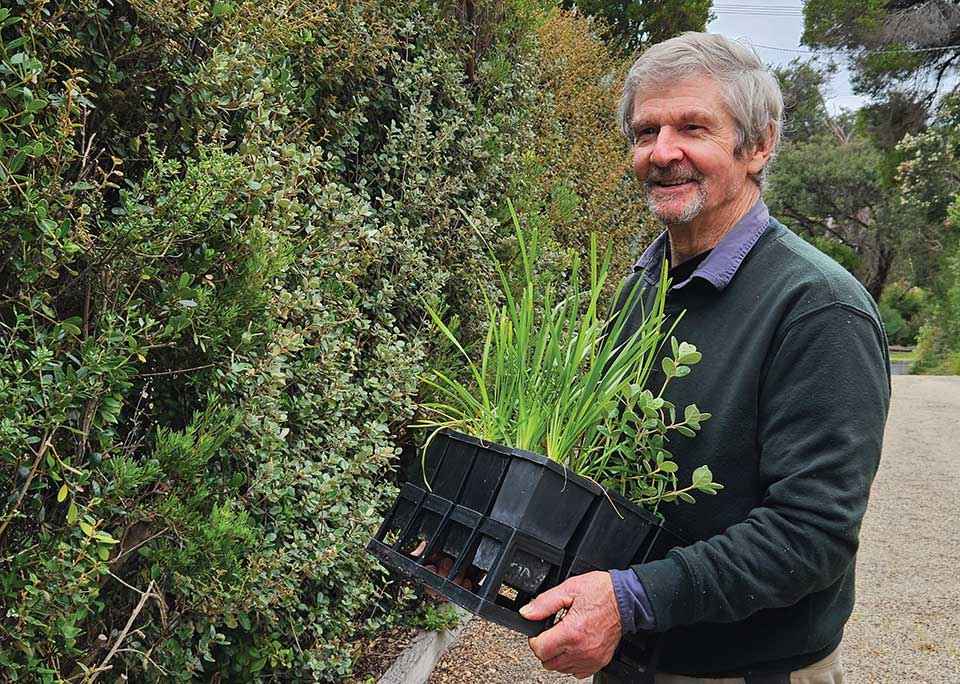Victorian Landcare Magazine - Winter 2024, Issue 87

Clad in his distinctive hi-vis volunteer vest, Simon Davies can regularly be seen weeding invasive species and planting native flora along Point Nepean Road at Rye. It’s something he’s done for the past two decades, weather permitting, since he retired after 16 years as a monumental stonemason.
Simon’s devotion stems from his first brush with indigenous plants, as a 19-year-old working with the Papua New Guinea forestry service with a focus on the klinki pine, also known as the New Guinea cypress. Back in Australia he worked full-time as a gardener at several properties at Portsea, and before and after work would do beach cleaning, mowing and maintenance for the Tyrone-Camerons Bight Foreshore Committee.
“I became very interested in the local vegetation then,” Simon said.
A new neighbour, Lindsay McCallum, introduced him to propagating, and he started growing plants for revegetation projects. During his time as a stonemason in Bendigo, Simon continued to propagate plants from the Mornington Peninsula, bringing them back with him for planting.
After returning to Rye, Simon became a member of the Friends of Whitecliffs Foreshore Reserve group, where he has demonstrated an unwavering dedication to the area’s preservation and enhancement. Simon shares his wealth of knowledge about the local ecosystem during workshops and informative guided tours along the foreshore to raise awareness about the importance of indigenous flora, fostering a sense of ownership among locals and a collective interest in biodiversity and coastal conservation.
He also assumed responsibility for the section of the reserve on the inland side of the highway to ease the burden on the reserve’s management committee, which he said was doing a wonderful job of looking after its four kilometres of beachfront with volunteers and, “only a couple of rangers,” Simon said.
According to Simon, the potential for this side of the road is remarkable because there is still quite a lot of remnant moonah woodland left.
“With an understorey of so many noxious weeds, like cotoneaster, sweet pittosporum, Italian buckthorn and periwinkle, it’s a matter of clearing it out and then getting it replanted. I couldn’t afford to do the work I do without propagating my own plants,” Simon said.
As well as propagating plants that are native to the area for revegetation works, Simon shares them with neighbours and other property owners to encourage them not to grow potentially invasive species in their gardens.
Simon said it had been wonderful to see the increasing awareness and understanding of native plants and their role in the environment over the past 50 years.
“Sometimes, when I’m working along that footpath, people will stop and they’ll be genuinely interested in what you’re doing. And I think that’s very rewarding. I have a very strong view: the character of the air is dependent on the vegetation. Many people when they go to the bush or they go up to the Murray, they don’t realise that what they’re enjoying is the indigenous vegetation that is around them,” Simon said.